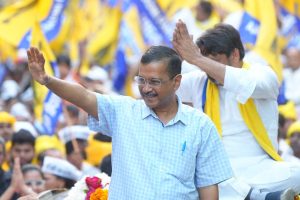Arvind Kejriwal resigned as Delhi’s chief minister on September 17. That marked the end of a particularly tumultuous term, which saw much of the senior leadership of Kejriwal’s Aam Aadmi Party (AAP) jailed on allegations of taking kick-backs to grant lucrative liquor sales licenses. Kejriwal is out on bail now but ceded the chief minister post.
Atishi, the education minister who held fort in the interim, will take the reins of the Delhi government for the remainder of its term, while Kejriwal focuses on a re-election campaign. Delhi will vote for a new legislative assembly sometime before February 2025.
State politics in India has always been a different beast, with far more ideological diversity than one sees in the battles for power at the center. That’s a good thing in a country as diverse as India; one size fits all policies don’t get too far. The Bharatiya Janata Party (BJP) – and pretty much every successful national party – recognizes that, and has forged some surprising alliances in their quest to govern. This dynamic can make political life messy. Crucially though, it also makes it harder, though not impossible, for anyone to wield absolute power.
Seen in that light, the current tensions between Delhi and the center might seem less concerning: just politics as usual, with the added headache of governance in the “union territory with state-like characteristics” that is the Indian capital. There have long been power struggles between Delhi and the center-appointed lieutenant governor.
Yet, in recent years, these tussles have left the AAP unusually hamstrung, most visibly, with the arrests of sitting state ministers. Other moves, while less likely to make front page news, could have a more lasting impact on voters.
For example, Delhi’s electric vehicle policy expired in July. A new policy needs Cabinet clearance; that’s not likely until after February. Winter is around the corner, and the EV policy’s absence will be felt more acutely as air quality in the capital deteriorates. Similarly, the doorstep delivery of services scheme expired in March, and also needs Cabinet approval to restart. That too is unlikely until after the election.
Perhaps what’s stymied governance the most is the AAP’s inability to appoint and fire senior bureaucrats. An eight-year legal battle ended this May with the Supreme Court ruling in favor of the Delhi government. In the wake of that decision, the BJP passed an ordinance forming a new National Capital Civil Service Authority to oversee the appointment of certain civil servants. While Delhi’s chief minister will be the chairperson of this body, the other two members – the chief secretary and home secretary – will be appointed by the central government, and the lieutenant governor will have final say over which bureaucrat goes where.
Some of this might seem like inside baseball, affecting mainly the denizens of Delhi – a city never famed for its civic services or an efficient bureaucracy, regardless of what harmony exists between the state and center. But a broader casualty of these tensions is the further erosion of a level electoral playing field. It becomes much harder to separate good policy from bad if competing ideas can’t get a fair shake at the ballot box.
Come February, if the BJP wins in Delhi, it will be tricky to say if better policy promises won out, or political bullying did. For a country that’s keen to position itself as the “mother of democracy,” that’s a worrying question to have unanswered.

































